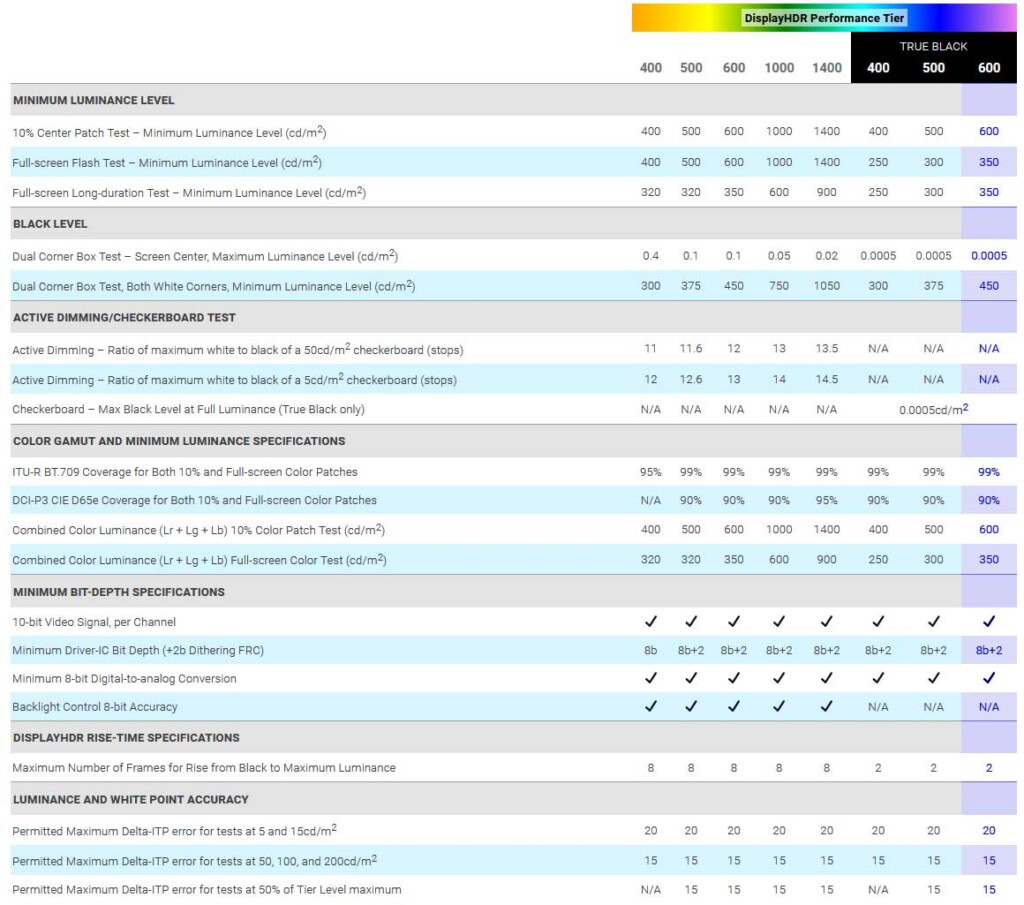
VESA Introduces New “DisplayHDR True Black 600” Performance Tier
- VESA creates a new “True Black” performance tier as ASUS has gone beyond the current spectrum.
- The new OLED screens are brighter than anything we’ve seen from the particular technology thus far.
- OLEDs can be majestic to look upon, or work, or game on, but they’re not always the right choice.
It appears that ASUS’ new display technology has just gotten beyond the performance spectrum defined by VESA (Video Electronics Standards Association). Hence, the organization had to introduce a new performance tier called “DisplayHDR True Black 600”. This is a new addition at the bleeding edge of the spectrum of the HDR (high dynamic range) specification and standard and is considered superior to the existing “DisplayHDR True Black 400” and “500” tiers. As such, if you’re looking for the best that money can buy, this is the new certification you should be going for.
The product that ushers this new classification in performance is the ASUS Vivobook Pro laptop, featuring an OLED display. ASUS has been offering OLED displays on its top-tier “creator-focused” laptops since 2019, so pushing for something with an even greater dynamic range was a natural development for them.
To understand what the new tier brings and appreciate it in comparison to the other performance categories, check out the following table:
In summary, the “600” brings higher luminance levels on colors, and lower luminance on blacks, while the color gamut and the Delta-ITP error remain at top levels. The peak luminance is 600 cd/m2, hence the name, while blacks are 0.0005 cd/m2, the lowest that can be measured using industry-standard colorimeters. So, compared to the “500” tier, the “600” is 20% brighter, and that difference should be clearly visible and noticeable.
Obviously, “DisplayHDR True Black 600” screens deliver a stunning visual experience, and in the case of the ASUS Vivobook Pro, they also have 0.2 ms of response times, only 6.5% of blue light, and 100% DCI-P3 of color gamut. This makes the product amazing for both playing fast-paced games and enjoying darkish films, or whatever. The main problem is the price of these screens and the products they go into, which is always salty.
The other thing to consider is that OLED displays don’t offer the silky smooth 144Hz of refresh rates that are now a standard in the LCD screen world. Finally, as mesmerizing as OLEDs may be, their brightness still peaks much lower than that of LCDs, so if you’re planning to use the screen in an environment where there’s plenty of light hitting it, the OLED won’t be as enjoyable as you hope.








